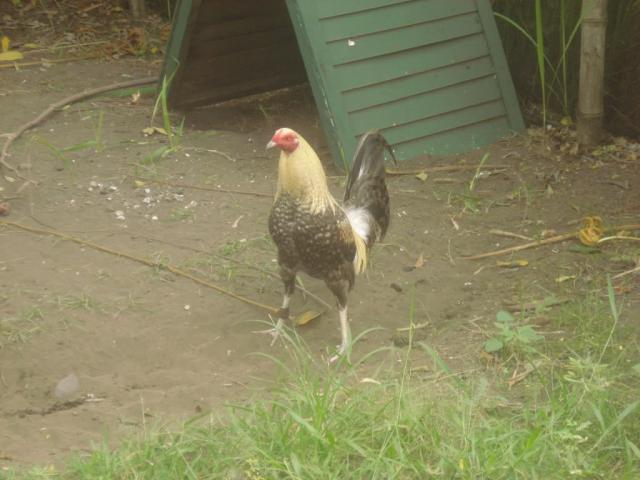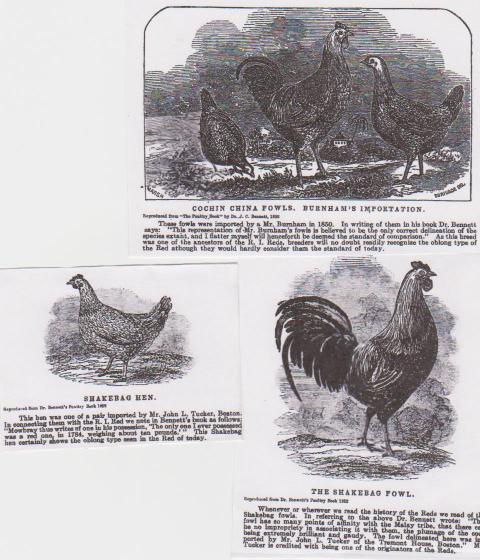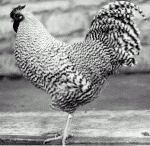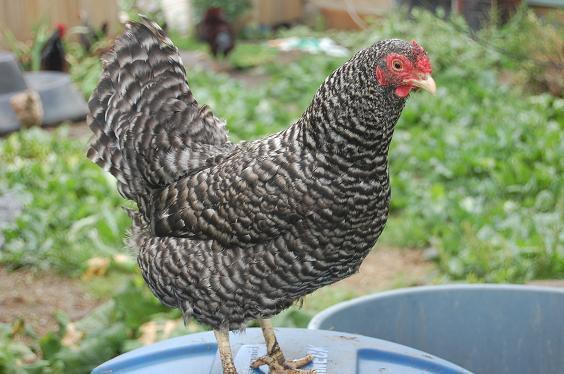Navigation
Install the app
How to install the app on iOS
Follow along with the video below to see how to install our site as a web app on your home screen.
Note: This feature may not be available in some browsers.
More options
You are using an out of date browser. It may not display this or other websites correctly.
You should upgrade or use an alternative browser.
You should upgrade or use an alternative browser.
Dominique X Barred rock cross
- Thread starter jarcoo0153
- Start date
Fred's Hens :
If anyone wants to see what true Barred Rocks should look like, go here: https://www.backyardchickens.com/forum/viewtopic.php?id=399477&p=1
This is a long running thread on BYC which feature photos of real Barred Rocks. They are gorgeous. What the rest of us have, me included, are birds that simply do not compare. What we have is pretty shoddy when compared to the real deal. I'm not offended, so I hope you aren't either.
I would personally LOVE to get some true to form Barred Rocks. I like the birds I have well enough, but I know they're mutts in comparison.
I don't take offence. I've seen this thread, and it is amazing. These TRUE BR are very hard to find though..
These BR's seem so much more fluffy than the ones I have!
If anyone wants to see what true Barred Rocks should look like, go here: https://www.backyardchickens.com/forum/viewtopic.php?id=399477&p=1
This is a long running thread on BYC which feature photos of real Barred Rocks. They are gorgeous. What the rest of us have, me included, are birds that simply do not compare. What we have is pretty shoddy when compared to the real deal. I'm not offended, so I hope you aren't either.
I would personally LOVE to get some true to form Barred Rocks. I like the birds I have well enough, but I know they're mutts in comparison.
I don't take offence. I've seen this thread, and it is amazing. These TRUE BR are very hard to find though..
These BR's seem so much more fluffy than the ones I have!
Fred's Hens :
First, the Barred Rocks were bred, in part, out of the Dominique to begin with, way back when. They've always been related. The Barred Rock was made, IIRC, by adding some Cochin and other things. Anyhow, the Barred Rock is a derivative of the Dom to begin with is the point. The Dom over BR would produce nice birds taking on blended characteristics of both. You would still be able to sex them at hatch the way you do both breeds now, by the head spot.
The Dom has yellow legs. Non yellow legs would come from some wrong things in the recent breeding of a particular bird. It's sure sign of not being a BR in purity. Lots of folks breed sub-standard birds, call them BR and sell them. Doesn't make them bad birds, just not quality stock.
Not disagreeing with what you wrought but only clarifying it.
The Dominique that was used to create the Barred Rock was a different breed than the Dominique we have today.
Back when the Barred Rock was being created the word Dominique referred to a pattern and not a breed since then we have broke down the Dominique pattern into Barred, Cuckoo, Crele etc..
Dominique (Dom) Gamefowl (not my bird)

There was even a Dominique Leghorn
http://books.google.com/books?id=33...Q6AEwAQ#v=onepage&q=Dominique Leghorn&f=false
Also the Cochin that may have been used in the breeding of the Barred Rock was probably the Cochin China fowl that differed from today's Cochin.

Chris
First, the Barred Rocks were bred, in part, out of the Dominique to begin with, way back when. They've always been related. The Barred Rock was made, IIRC, by adding some Cochin and other things. Anyhow, the Barred Rock is a derivative of the Dom to begin with is the point. The Dom over BR would produce nice birds taking on blended characteristics of both. You would still be able to sex them at hatch the way you do both breeds now, by the head spot.
The Dom has yellow legs. Non yellow legs would come from some wrong things in the recent breeding of a particular bird. It's sure sign of not being a BR in purity. Lots of folks breed sub-standard birds, call them BR and sell them. Doesn't make them bad birds, just not quality stock.
Not disagreeing with what you wrought but only clarifying it.
The Dominique that was used to create the Barred Rock was a different breed than the Dominique we have today.
Back when the Barred Rock was being created the word Dominique referred to a pattern and not a breed since then we have broke down the Dominique pattern into Barred, Cuckoo, Crele etc..
Dominique (Dom) Gamefowl (not my bird)

There was even a Dominique Leghorn
http://books.google.com/books?id=33...Q6AEwAQ#v=onepage&q=Dominique Leghorn&f=false
Also the Cochin that may have been used in the breeding of the Barred Rock was probably the Cochin China fowl that differed from today's Cochin.

Chris
Last edited:
Chris,
Thanks, so much.
Wouldn't you agree that the lines between the current BR and the Doms is pretty blurry? Other than the comb, most strains of either do not have as much distinguishing as they should?
Thanks, so much.
Wouldn't you agree that the lines between the current BR and the Doms is pretty blurry? Other than the comb, most strains of either do not have as much distinguishing as they should?
Fred's Hens :
Chris,
Thanks, so much.
Wouldn't you agree that the lines between the current BR and the Doms is pretty blurry? Other than the comb, most strains of either do not have as much distinguishing as they should?
I agree with you all the way.
Today's Exhibition American Dominique has a very blurry background. Somehow they when from being a game-like fowl to a big broad Rock-like fowl.
As for the hatchery type Barred Rock and Dominique there is next to no difference between the two "breeds" in fact the hatchery type Barred Rock looks more like a Single Comb Dominique than a Barred Rock.
Nice old American Dominique,

One of my hens with a game-like appearance. (she lost her Yellow pigmentation do to her high egg production),

Chris
Chris,
Thanks, so much.
Wouldn't you agree that the lines between the current BR and the Doms is pretty blurry? Other than the comb, most strains of either do not have as much distinguishing as they should?
I agree with you all the way.
Today's Exhibition American Dominique has a very blurry background. Somehow they when from being a game-like fowl to a big broad Rock-like fowl.
As for the hatchery type Barred Rock and Dominique there is next to no difference between the two "breeds" in fact the hatchery type Barred Rock looks more like a Single Comb Dominique than a Barred Rock.
Nice old American Dominique,

One of my hens with a game-like appearance. (she lost her Yellow pigmentation do to her high egg production),

Chris
Last edited:
Fred's Hens :
Quote:
Sure. We also have some framed prints on our walls that came from Target or WalMart too. But I've also been to Europe a few times and see real art. I've owned a few no brand televisions and they work fine, but my Sony? Well.... now. I've used cheap $30 saws, drills and other tools and I've used Makita, DeWalt and Milwaukee tools. All of the them work. But.....!! I've driven across the US in a cheap little compact car and have made the same trip in a luxury ride of a Lexus. Yes, common utility has its place, and I am a simple guy. But, it is also very, very nice to have things of quality once in awhile too.

I totally agree but when it comes to livestock, most of the time a hybrid, of some sort will out perform a pure animal in production. I also agree that the pure lines need to be maintained for show purposes, breed preservation, and the creation of more useful hybrids. Just saying every bird has it's niche not matter it's liniage.

Quote:
Sure. We also have some framed prints on our walls that came from Target or WalMart too. But I've also been to Europe a few times and see real art. I've owned a few no brand televisions and they work fine, but my Sony? Well.... now. I've used cheap $30 saws, drills and other tools and I've used Makita, DeWalt and Milwaukee tools. All of the them work. But.....!! I've driven across the US in a cheap little compact car and have made the same trip in a luxury ride of a Lexus. Yes, common utility has its place, and I am a simple guy. But, it is also very, very nice to have things of quality once in awhile too.

I totally agree but when it comes to livestock, most of the time a hybrid, of some sort will out perform a pure animal in production. I also agree that the pure lines need to be maintained for show purposes, breed preservation, and the creation of more useful hybrids. Just saying every bird has it's niche not matter it's liniage.

Dominiques were a breed; not just a color pattern. There were even single comb Dominiques until the standard eliminated them. They were always a bit muddy in pattern on farms because this was known as "hawk coloring" and was supposed to be protective. People actually didn't want clean bars on them.
The standards to which birds are bred miss one important point for utility - productivity. One reason some breeds are heritage today instead of being used commercially is that the standard exaggerated traits that were incompatible with productivity. The original Cochins much admired by Queen Victoria looked nothing like the modern Cochin. Feathers and eggs require protein; heavier feathering comes at a utility cost. Ditto the extreme white face found on the modern "Spanish." The original imported birds had a much smaller white facial area.
Some strains of Barred Rocks are still in commercial use and they do not tend to look very much like the standard as far as pretty patterns. They are extremely productive, and although pure bred, they have been bred for utility traits, not appearance.
Nadja, the last darn nester.
The standards to which birds are bred miss one important point for utility - productivity. One reason some breeds are heritage today instead of being used commercially is that the standard exaggerated traits that were incompatible with productivity. The original Cochins much admired by Queen Victoria looked nothing like the modern Cochin. Feathers and eggs require protein; heavier feathering comes at a utility cost. Ditto the extreme white face found on the modern "Spanish." The original imported birds had a much smaller white facial area.
Some strains of Barred Rocks are still in commercial use and they do not tend to look very much like the standard as far as pretty patterns. They are extremely productive, and although pure bred, they have been bred for utility traits, not appearance.
Nadja, the last darn nester.
I think, like alot of things, some of these breeds are pure but don't meet standard. The difference between show lines and production lines. Most show lines of anything would fail horribly in a production/working setting, this goes for everything: cattle, Sheep, dogs, utility breed pigeons, chickens... the list goes on. The only species that I wouldn't think this would apply to are most horses and hogs.
Last edited:
- Nov 28, 2010
- 757
- 68
- 168
Quote:
What year was there a Single Comb Dominique in the American Standard of Perfection?
I think she means that untilthey were accepted into the APA, Dominiques could have either rose or single combs. But the standard that was written that allowed the Dominique into the APA eliminated single combs. The NEW (and wildly popular!) Barred Plymouth Rocks were accepted into the APA the same year, and I suspect *those* breeders had a great deal to say about whether the single comb became an exclusive BPR trait, though the Dominique is the older of the two by many decades.
What year was there a Single Comb Dominique in the American Standard of Perfection?
I think she means that untilthey were accepted into the APA, Dominiques could have either rose or single combs. But the standard that was written that allowed the Dominique into the APA eliminated single combs. The NEW (and wildly popular!) Barred Plymouth Rocks were accepted into the APA the same year, and I suspect *those* breeders had a great deal to say about whether the single comb became an exclusive BPR trait, though the Dominique is the older of the two by many decades.
New posts New threads Active threads
-
Latest threads
-
Injury - new white Orpington pullet we bought getting severely beat up by guineas. What to do?!
- Started by Oxydziedhens
- Replies: 2
-
Chicken resting on haunches
- Started by MarlaMac
- Replies: 1
-
-
-
-
-
Threads with more replies in the last 15 days
-
-
Question of the Day - Thursday, August 14th, 2025
- Started by casportpony
- Replies: 75
-
-
-
-
×



